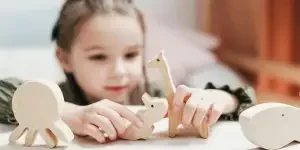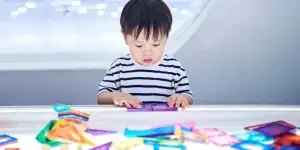Building blocks are a timeless variety of toys that help kids develop various motor and problem-solving skills, the benefits of which are espoused by experts, parents, and teachers alike.
These fun and enchanting toys have ignited the imagination of children for decades, all the while helping to promote everything from brain development to language abilities. This article highlights the best building blocks for kids, indicating which ones you’ll want to stock up on for parents or educators wanting to boost their children’s development.
Table of Contents
Why kids’ building blocks are in high demand
Factors to consider when selecting kids’ building blocks
7 top building blocks for kids
The future of kids’ building blocks
Why kids’ building blocks are in high demand

Kids’ building blocks are in high demand due to their ability to promote creativity, cognitive development, and fine motor skills. They offer educational value while providing engaging and screen-free play, appealing to both parents and educators. Over 57% of the construction toy industry’s total sales in 2022 came from the bricks and blocks category.
Below are the primary reasons kids’ building blocks are in high demand:
Improves motor skills
Children make use of their hands to assemble and manipulate the building block pieces, helping them to develop hand-eye coordination and fine motor skills. Such skills are essential for other activities like drawing, writing, and tying shoelaces.
Teaches problem solving
When children play with building blocks, they must think critically to solve problems. They employ their imagination to figure out how to fit different block shapes and sizes together to create stable and meaningful structures. This trial-and-error process helps boost their logical thinking and problem-solving abilities.
Increases spatial awareness
Children who create structures using building blocks exercise their spatial awareness in order to plan and visualize their creations in 3D, relying on vital understandings of symmetry, proportion, and balance. These are essential for understanding spatial relationships and geometry.
Reduces screen time
Good parents and caregivers looking for ways to reduce their children’s screen time can look to building blocks as they are often engaging enough to occupy and stimulate a child’s mind while promoting vital skills.
Factors to consider when selecting kids’ building blocks
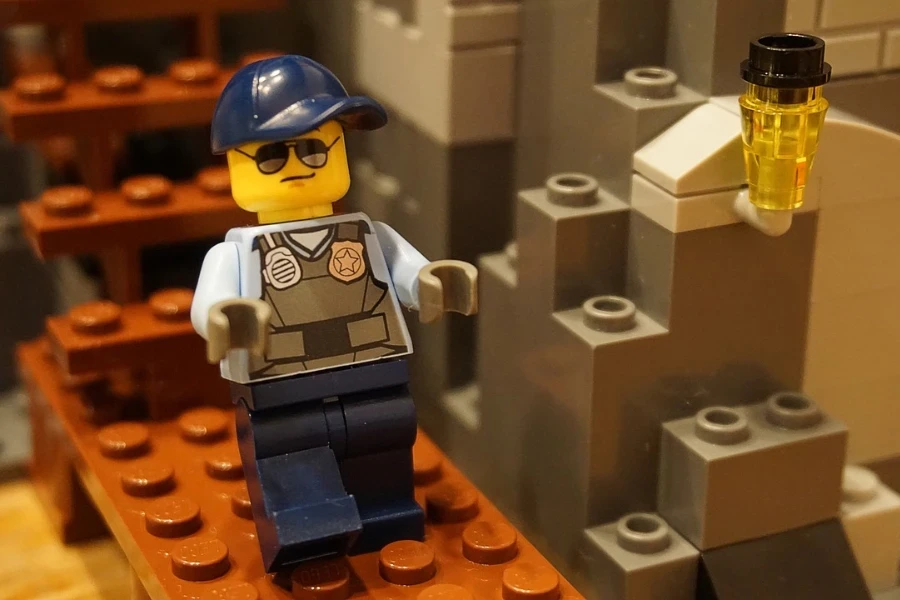
When selecting which building blocks to stock, you’ll want to consider the following:
Age-appropriateness
Choose age-appropriate building blocks that are simple and manageable but suitable for kids in specific age ranges.
Durability
Ensure the building blocks are manufactured using high-quality and safe materials capable of withstanding the wear and tear of play.
Entertainment value
Opt for building blocks with unique colors, shapes, and textures that encourage imaginative play through a wide range of creative possibilities.
Safety
Ensure the building blocks meet all safety regulations and standards and are devoid of sharp edges, harmful chemicals, and small parts.
Versatility
Select building blocks that kids can use in a variety of ways, i.e., it’s best if they are compatible with other block sets and are suited to a child’s skill level or changing interests.
7 top building blocks for kids
Plastic building blocks
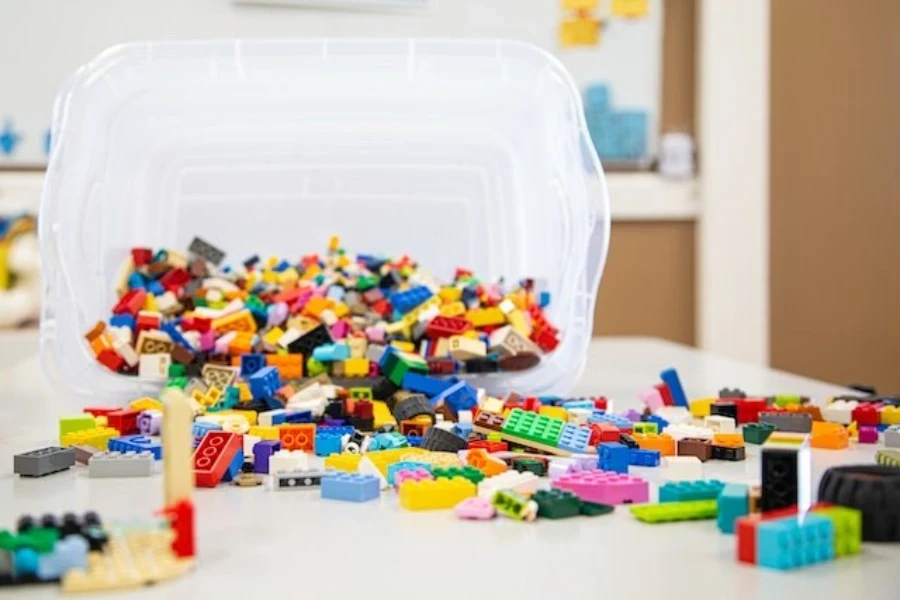
Plastic blocks are versatile and durable. They come in various shapes, colors, and sizes, making them highly suitable for kids of various ages. Some block sets also come with specialty pieces, connectors, hinges, and interlocking mechanisms that boost creativity. They may also have themed elements like vehicles or animals to spark imaginative play.
Suitability
Plastic blocks are suitable for children as young as 18 months and can continue to be enjoyed by individuals of all ages, including adults.
Wooden building blocks
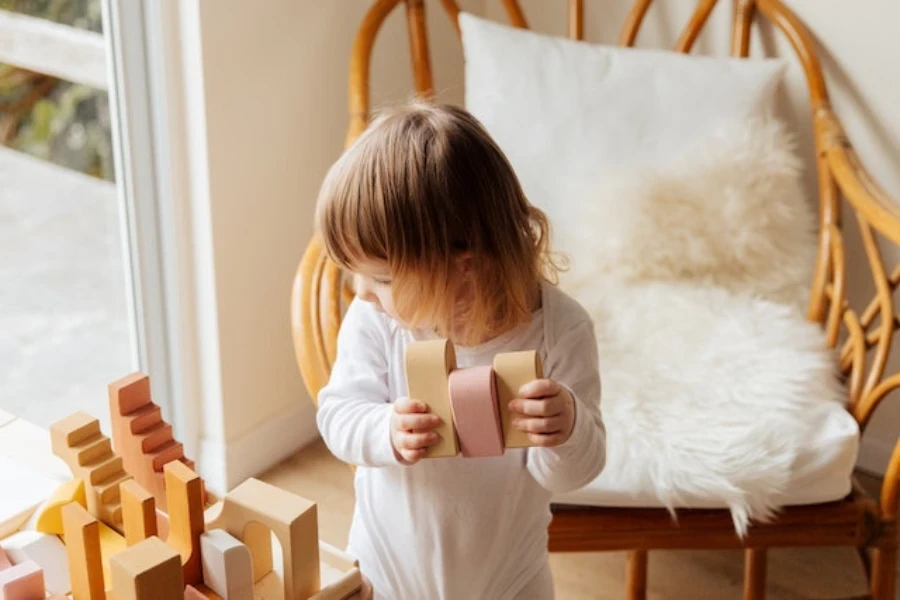
Wooden building blocks are loved for their eco-friendly and natural attributes. This makes them a favored choice for parents and guardians who prefer buying sustainable materials for their kids.
These building blocks have a tactile and aesthetic feel that encourages sensory exploration, and come in various geometric shapes, sizes, and arches. Wooden toys can be used for both educational purposes and open-ended creative activities.
Suitability
Wooden building blocks are suitable for children aged 2 and up, with continued use often enjoyed by older children and adults too.
Magnetic building blocks
Magnetic building blocks use magnets to connect and hold the various pieces together. This adds an extra dimension to construction, allowing for stability and easy connection.
Since they are magnetic, these building blocks repel and attract, helping kids to learn about geometry and magnetism. They can also be used for creating 3D structures.
Suitability
Magnetic building sets are typically suitable for children aged 2 and up, but parental supervision may be required for younger children to ensure safe play.
Acrylic building blocks
Acrylic building blocks are generally transparent, providing a unique approach to design and construction. These blocks showcase a modern and sleek look, making them excellent choices for older kids and teenagers. Users can play with acrylic blocks alongside other materials, such as safe light sources, to construct illuminated designs or sculptures.
Suitability
Acrylic building blocks are typically suitable for children aged 3 and up. Still, parental supervision may be needed to ensure safe play, as acrylic blocks can have sharp edges or corners.
Programmable building blocks
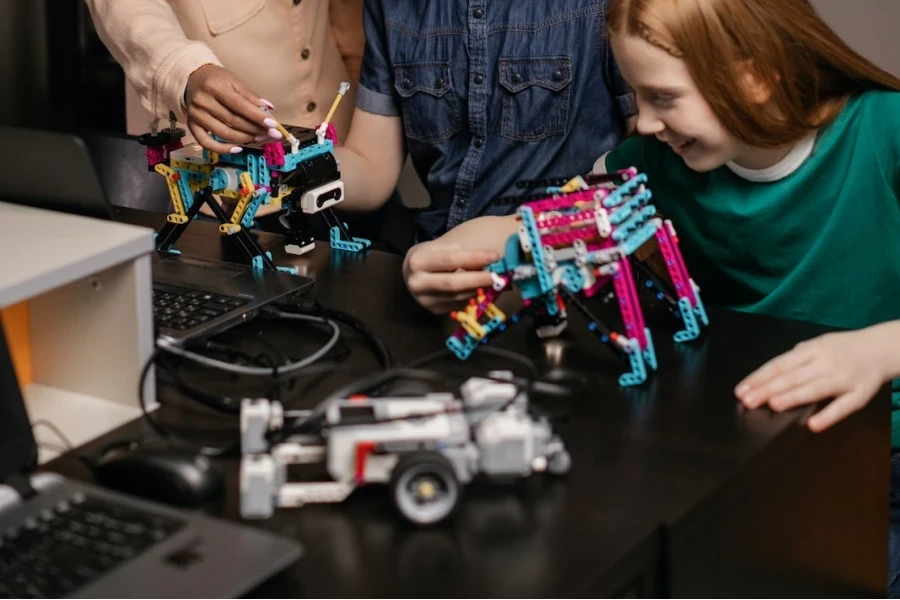
Programmable building blocks incorporate principles from construction and coding to provide an interactive and educational experience. Programmable sets are usually compatible with several software platforms that provide various coding activities and challenges, giving kids a chance to learn coding concepts as they build their creations.
Suitability
Programmable building blocks, like those used in educational robotics kits, are suitable for children aged 6 and up, depending on the complexity of the kit and the child’s familiarity with technology.
Foam building blocks
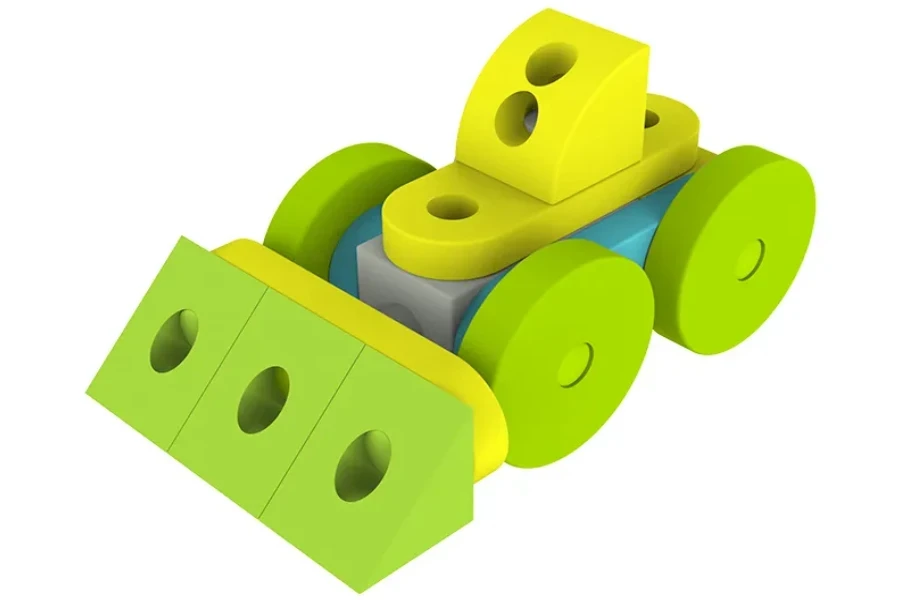
Foam building blocks are soft, lightweight, and considered safe for toddlers. They are the perfect choice for early developmental play and are available in various sizes. These blocks are usually larger than traditional building blocks but remain easy for little hands to manipulate since they are soft.
Suitability
Foam building blocks are safe and suitable for children as young as 6 months and as old as to toddlers and preschoolers for creative play and motor skill development.
Paper building blocks
Paper building blocks are an eco-friendly toy option thanks to their recyclable nature, appealing to environmentally-conscious parents or guardians. They are available in interlocking or foldable designs, are lightweight, and promote precision and fine motor skills, which is why they are often used for creative building and art projects.
Suitability
Paper building blocks are suitable for children aged 1 and above and can be used for imaginative play and creative construction projects.
The future of kids’ building blocks
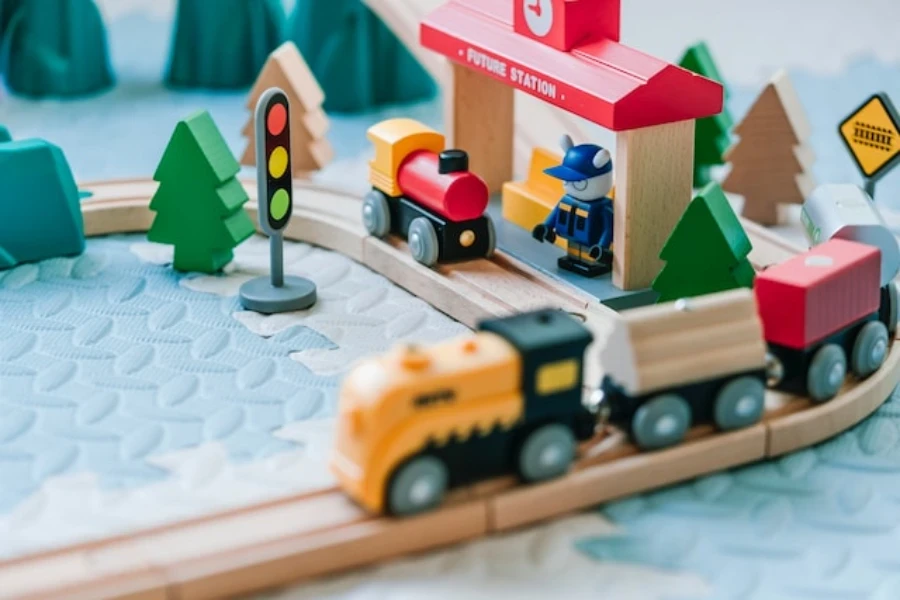
In the ever-evolving landscape of education and play, the future of kids’ building blocks holds exciting potential. As technology becomes increasingly integrated with traditional toys, more programmable and high-tech building blocks are hitting the market, fostering a new era of creativity and skill development.
Building blocks, made from everything from plastic to paper, offer valuable educational benefits by nurturing essential STEM skills like problem-solving, spatial reasoning, and creativity. Regardless of the material, these versatile tools provide a hands-on foundation for young learners to explore and excel in STEM disciplines.
If you’re in the market for this exciting and timeless toy, look no further than Alibaba.com, where there’s a huge range of building blocks just like the ones outlined above.



